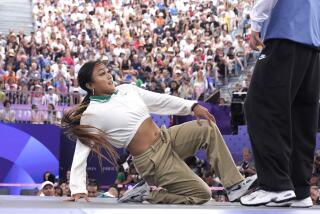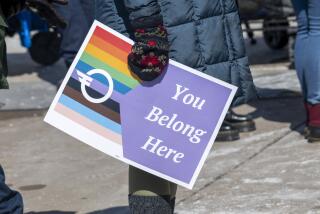6 million Muslim stories waiting to be told
KARIMA ALAVI, an American convert to Islam, has a quick comeback for critics of hijab, the head covering worn by Muslim women: Get over it!
“People make assumptions when they look at me because of the fabric on my head,” Alavi told a group of journalists attending a seminar this month on media coverage of Islam and Muslims in the United States. “I was at a Dunkin’ Donuts in Virginia, and a man was staring at me. Finally he came over and said, ‘How could you?’ ”
Alavi is a program director at Dar al Islam, an Islamic education center in Abiquiu, N.M. Her forthright manner neatly skewers facile assumptions about Muslim womanhood. But the discrepancies between fact and fiction extend far beyond Americans’ misconceptions.
At the five-day seminar at USC, I discovered how little I knew about the estimated 6 million Muslims in our midst. My biggest surprise was how passionately committed second-generation Muslim Americans are to social justice and political activism.
These Gen-Xers, similar to the cohort of 20- and 30-something Christians and Jews, confirm the findings of two recent studies on religion and young adults conducted by the Higher Education Research Institute at UCLA and by Anna Greenberg for Reboot, a nonprofit organization. This generation, the studies found, is spiritually oriented, even religiously committed, and socially progressive.
Sept. 11, 2001, was a turning point for Muslim Americans who came of age this century. To them, Islam is not the faith of fanatics. Rather, the religion’s emphasis on submission to God and service to others makes it a corrective to hate, injustice and inequality.
Before Khadeeja Abdullah, a seminar panelist, went to college, she struggled to integrate her Muslim and American identities. Like many children of immigrants from Southeast Asia, Africa, Europe and the Middle East, she absorbed the American ideals of democracy, autonomy and individualism while growing up. But how to reconcile these with the Islamic values of submission and community?
At UCLA, she found Muslim students asking similar questions.
“I figured out my responsibility within my community and within American society,” said Abdullah, adding that she volunteers at a health clinic, tutors for free and is helping to start a shelter. “It is to give voice to the voiceless.”
The Abrahamic faiths — Judaism, Christianity and Islam — all uphold tenets that grant special status to the poor and oppressed. But the media’s focus on political extremists has deflected attention from the younger generation of Muslims who strive for social justice. Female Muslim panelists at USC, some with head coverings, faulted the media’s preoccupation with veils, burkas and chadors when so many Americans lack food, shelter and healthcare. They acknowledged that gender discrimination is an issue in Islam. But they are more concerned with poverty and injustice than with personal dress.
The young Muslims’ attempts to apply fundamental religious teachings to their daily lives — a give-and-take also familiar to young Jews and Christians — were a running theme in seminar sessions. Is there an American Islam or only one eternal faith?
Until recently, Muslim Americans were guided by overseas clerics and scholars who did not always understand the challenges and opportunities the faithful face in the United States. Today, a new generation of indigenous leaders are beginning to weigh in too.
“We must let people know the values of Islam according to our current time,” Fathi Osman, senior scholar at Masjid Omar ibn Al-Khattab mosque in Los Angeles, told journalists. “Its values are universal but understood through historic cultures.”
For the Islam convert Alavi, that means engaging students who come to Dar al Islam worried about being both American and Muslim enough. It also means working with parents who fear American institutions will compromise Islamic values.
“Parents in the community are asking, ‘Do we want to send our kids to American universities where secular humanists will teach them about Islam?’ ” she said. “Where do we go?”
Alavi was right to tell journalists hung up on hijab to get over it. But the challenge facing them is to get on with it — reporting and writing some of the 6 million stories in their midst.
More to Read
Sign up for Essential California
The most important California stories and recommendations in your inbox every morning.
You may occasionally receive promotional content from the Los Angeles Times.










